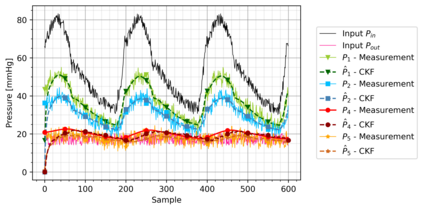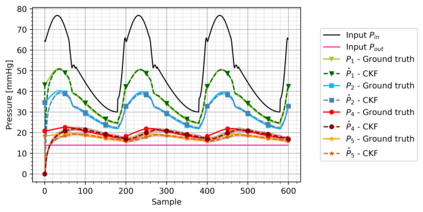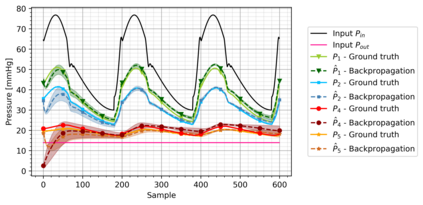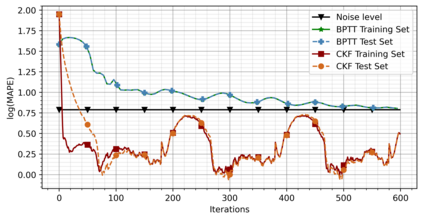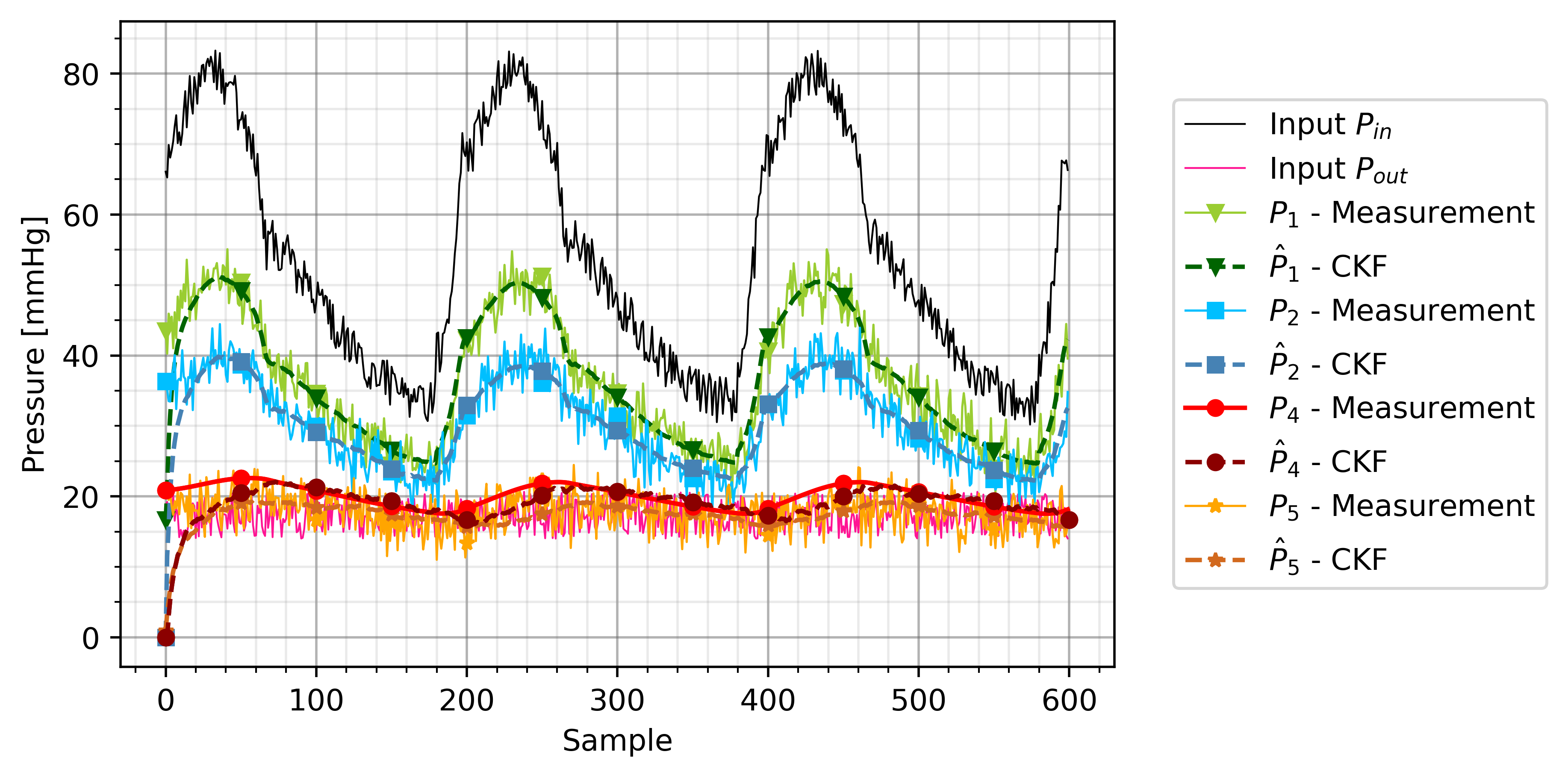Modeling biological dynamical systems is challenging due to the interdependence of different system components, some of which are not fully understood. To fill existing gaps in our ability to mechanistically model physiological systems, we propose to combine neural networks with physics-based models. Specifically, we demonstrate how we can approximate missing ordinary differential equations (ODEs) coupled with known ODEs using Bayesian filtering techniques to train the model parameters and simultaneously estimate dynamic state variables. As a study case we leverage a well-understood model for blood circulation in the human retina and replace one of its core ODEs with a neural network approximation, representing the case where we have incomplete knowledge of the physiological state dynamics. Results demonstrate that state dynamics corresponding to the missing ODEs can be approximated well using a neural network trained using a recursive Bayesian filtering approach in a fashion coupled with the known state dynamic differential equations. This demonstrates that dynamics and impact of missing state variables can be captured through joint state estimation and model parameter estimation within a recursive Bayesian state estimation (RBSE) framework. Results also indicate that this RBSE approach to training the NN parameters yields better outcomes (measurement/state estimation accuracy) than training the neural network with backpropagation through time in the same setting.
翻译:由于不同系统组成部分的相互依存性,生物动态系统建模具有挑战性,这些组成部分中有些尚未完全理解。为了填补我们在机械学模拟生理系统能力方面的现有差距,我们提议将神经网络与物理模型结合起来。具体地说,我们展示如何利用贝叶斯过滤技术,与已知的贝叶斯过滤法,利用已知的贝叶斯过滤法,来训练模型参数,同时估计动态状态变量,将缺少的普通差异方程式(ODEs)和已知的ODEs相近相近。作为研究案例,我们利用一个广为人知的模型,在人类视网内进行血液循环,用神经网络近距离来取代其核心数。结果还表明,与缺失的数值相对应的状态动态网络可以使用经过再现的贝叶斯过滤法训练的神经网络,同时使用已知的动态差异方程式,从而使用已知的状态差异方程式来模拟模型参数,从而通过对贝伊西亚州(RBSE)进行联合估算和模型参数估计,从而用神经网络的精确度测算结果。结果还表明,这种RBSE方法比对NRPE的精确度进行更好的测量测算。

